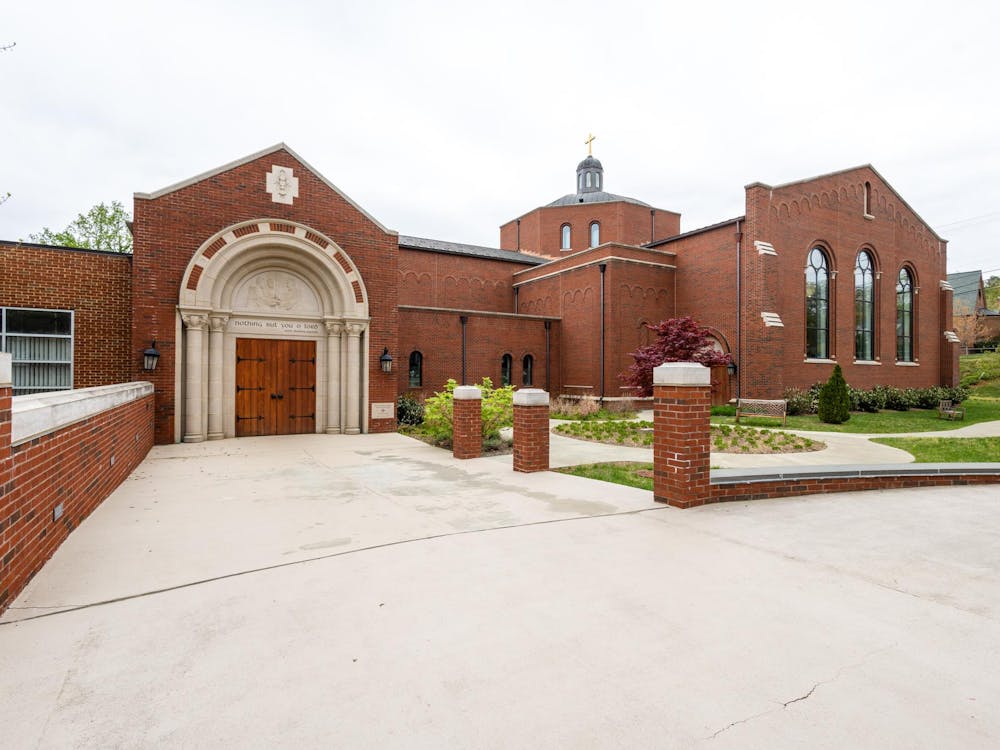Current undergraduate students in the Batten School of Leadership and Public Policy and the McIntire School of Commerce came to the Multicultural Student Center Thursday to talk to second-year applicants. The event, titled “Cake with Comm and Chattin’ with Batten,” provided an informal and comfortable venue for students of color to ask questions over cake and coffee.
The event was organized by Parnia Ashari — a fourth year Batten student and Leadership Development Intern at the MSC — and members of the Second Year Council.
“Both of us felt that the professional schools McIntire and Batten could use more multicultural applicants because … multicultural students don’t apply as much as other students at the University,” Ashari said.
For the 2019-2020 academic year, 57 percent of third- and fourth-year students at the Commerce School are white, and 57 percent are male. 14 percent are Asian-American, 6 percent are Hispanic and four percent are African-American.
According to 2018 demographic information, 70.8 percent of the Batten undergraduate population is white, and 67 percent are female. 5.6 percent of Batten undergraduates are Asian American, 7.5 percent are Hispanic, 5.6 percent are African American and 4.4 percent are multi-racial.
“It’s a known fact at U.Va. that ... the Comm School and Batten School are very underrepresented in people of color and people of other marginalized communities,” said Manan Shah — a second-year College student who serves on the Diversity and Inclusion Committee in the Second Year Council and is applying to the Batten School. “The whole goal was to increase awareness of both of these programs to students of color.”
The event organizers provided a guideline of possible questions for students to ask about the curriculum, application and essay-writing processes, and diversity, identity and life at Batten and McIntire.
“This is an event where they can freely ask questions to current students at the schools and feel comfortable enough asking difficult questions,” Ashari said. “It’s good for the students to have a real perspective on the academics at Batten and what it means to be multicultural at Batten, or McIntire.”
Shah explained that the Second Year Council and the MSC envisioned an event where second years — particularly those from marginalized backgrounds — could get more information from upperclassmen about the curriculum and diversity at McIntire and Batten.
During the event, students were able to give an honest portrayal of their experience in Batten and McIntire.
“Some of the students of color at Batten and the Comm school, they were relaying their opinion on how when they walked into class on the first day, they felt a bit of pressure because when they looked around the room and at their professors … you could tell it was homogenous in some sense,” Shah said.
Students expressed concern in discussions that the lack of diversity in the two schools discourages students of color from applying.
“It’s definitely a self-fulfilling prophecy — people of color don’t see people of color in Batten and Comm, and they don’t apply, and that’s what keeps it up,” said Katie Zhang, also a member of the Diversity and Inclusion Committee on the Second Year Council. “Yes, we need more students of color to apply to these schools, but it shouldn’t be the onus of the students to break their way into these schools — it should be a two-sided effort.”
In discussions, the lack of diversity in Batten faculty was a recurring issue. Shah relayed the opportunity for understanding more perspectives with more students and professors of color.
“We could hear more about how marginalized communities feel when certain policies are enacted, and how those consequences can negatively affect marginalized people, especially people of color,” Shah said.
Zhang noticed that in her discussions in upperclassmen, there was a general feeling that Batten specifically is not doing enough to support diversity. “The consensus was that diversity is in the problem recognition stage at Batten… there is not a concrete plan that we know of [to address the issue],” said Zhang. “Batten has to incentivize people of color to apply.”
Ashari noted that while there is still “some room for improvement for sure” as far as diversity goes at Batten, she is hopeful for the future under new Batten School Dean Ian Solomon.
As of now, the Batten School does not have an official office for diversity and inclusion. The only two organizations geared toward supporting marginalized Batten students are student-run — the Batten Latinx Network and Women in Policy.
McIntire has a Diversity Advisory Committee and the McIntire Ally Program, which aim to support students of color. There are also student organizations that promote diversity within the school including the Black Commerce Student Network, the Latino Student Network, the Women’s Business Forum and PRIDE at McIntire.
Ashari stressed the potential for improvement within the schools if more students of color apply to Batten and McIntire.
“If we get more people to apply, we could have better programs at the two schools, because the students are what build the programs,” said Ashari. “If we don’t have diverse student populations there will not be a need for a diverse curriculum that offers different perspectives.”
Shah and Zhang acknowledged the efforts of the MSC in raising awareness of issues faced by people of color here at the University, and working to improve their experience by hosting events like these.
“We really hope to see not only students of color here at the MSC but also white students and students of other privileged backgrounds so that they can gain more awareness of some of the issues that marginalized communities face here at U.Va.,” Shah said.







